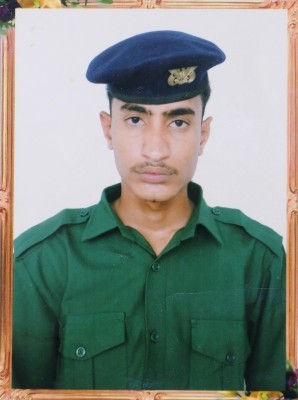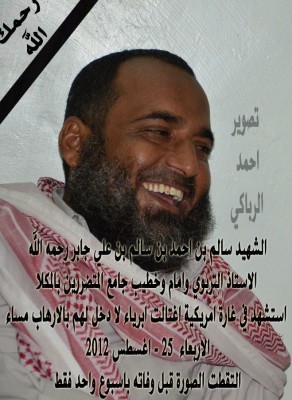Incident Code
Incident Date
Location
Geolocation
Geolocation
Airwars Assessment
(Previous Incident Codes: YEM100USYEM115)
As many as nine people were reportedly killed by alleged US drone or airstrikes as they travelled through the village of Khashamir on August 29, 2023. Up to four missiles were fired at the village causing extensive damage to homes and terrifying the local residents sufficiently for some to be rushed to hospital with shock. Between two and four civilians were killed in the strike and testimony from their relatives formed part of a submission to an April 2013 Senate subcommittee hearing on the constitutional and counterterrorism implications of targeted killings.
Five people were reported killed, according to initial reports, and the defense ministry said three militants were killed in the strike. Witnesses said a US drone fired on a car with at least one hitting the target, and a local source identified the vehicle as a Suzuki Vitara that was “heading on a secondary road linking the Akkad area with the village of Khashamir.” Local residents pulled “charred bodies” from the wreckage that were “badly mangled by the airstrike“. There was “a huge explosion” that rocked the area, one local resident said, adding that military aircraft remained hovering “over several Al Qaeda-held sites in Hadramout’s suburbs.”
It was initially understood that the car was targeted in a residential area and a policeman, Walid Abdullah bin Ali Jaber, and a “mosque imam”, Salem Ahmed bin Ali Jaber, were killed by the blast in their house. However subsequent investigations revealed a different story. Blogger Nasser Arrabyee claimed that militants had been visiting the Salafist cleric to threaten him when the strike took place. He wrote:
“He was always speaking against Al Qaeda. In his recent sermons he said Al Qaeda is against Islam… Al Qaeda sent on Wednesday four operatives to the cleric Jaber to blame him and while the five people were in the meeting a US drone came and killed them all.”
Reuters quoted the Union of Clerics and Preachers of Yemen’s Southern Provinces, who said in a statement that “Among the four killed in an attack launched by a U.S. aircraft in the al-Qatn district of Hadramout on Wednesday was one of our members, Salem bin Ahmed bin Ali Jaber, who had no link to Al Qaeda.”
Human Rights Watch (HRW) described Salem as a father of seven, the imam of al-Mutadharirin mosque in Mukalla and added that he taught at a government school and was studying for a doctorate at Hadramawt University. The same HRW report described Walid as the father of a two year old son and Khashamir’s traffic policeman, and his mother Hayat bin Ali Jaber said that “Every day he would go to work in his uniform, so proud of his work.”
Six months after the strike the New York Times uncovered more details. The Imam commanded great respect in the community. Two days before his death the father of seven had reportedly stood up in his village mosque, denouncing Al Qaeda in a speech. On August 29 three Al Qaeda members came to Khashamir after 9pm. The Imam met the militants, taking his cousin Walid Abdullah bin Ali Jaber, a policeman, with him for security. The five men were reportedly stood arguing by some palm trees when “a volley” of missiles killed them all.
RW provided similar details that a black Suzuki Vitara sports utility vehicle with three men inside came to Salim’s house multiple times on the day of August 29, with Salim finally meeting with them in the evening when the drone strikes hit. Faisal Jaber, the brother-in-law of Salim Jaber and the uncle of Walid Jaber told HRW that “The first two missiles hit the circle of men directly. When the men heard it they all ran toward the spot where it landed. Then the second missile struck and shrapnel flew over their heads. The third missile came from an angle and took off the roof of the car and hit them again. The fourth missile took a bit of time. Maybe they were checking to see if they were still alive. They [villagers] saw a man crawling and the fourth missile hit that man and his body was thrown 20 meters or more, onto the wall of a sheep’s manger near the mosque. His body was intact. Only the back of his head was gone.” HRW added that images provided by Faisal show the remains of an ordnance, which they identified as a Hellfire missile.
Dammon.net provided names of the Al Qaeda members killed as “one of them from the Bin Ali Jaber family and the other from the Batarfi family” while the third person’s identity was unknown.
According to evidence submitted by human rights groups to a Senate subcommittee hearing, the missiles landed within 15 metres of occupied houses and pedestrian paths. At least two passers-by, unnamed civilians, were killed by flying shrapnel. The submission said Salem Ahmed, 50, was a preacher at the local mosque, a teacher, and studying for a doctorate at the University of Hadramout. His father, Ahmad bin Salim Salih bin Ali Jabir, 77, investigated the strike and found people gathered at the site “wrapping up body parts of people from the ground, from here and there, putting them in grave clothes like lamb”. Salem Ahmed’s mother had fainted when the strike hit and she died a few weeks later. Walid Abdullah, 26, was a traffic policeman with a two and a half year old son. His brother said the boy was initially called Saud, but the family renamed him after his father. Whenever the child hears the sound of an airplane “he screams and yells, ‘The plane, the plane, the plane, my father, my father, I want my father’”.
HRW stated that Faisal Jaber received a call from the Yemeni government just after the attack: “An officer from the Counter-Terrorism Unit called me the night of the attack and said, “I am sorry. It was not Salim and Walid who were being targeted.” He said, “I can’t do anything for you but you can call [President] Hadi at the presidential palace landline….Faisal Jaber heard nothing more until June, after Human Rights Watch and other international nongovernmental organizations raised the issue of compensation with US government officials. At that time, the Yemeni government ordered condolence payments of 2.5 million rials ($11,600) each to Salim Jaber’s and Walid Jaber’s families, Faisal Jaber said. At the time of writing, the payments had yet to arrive.”
Aljazeera reported that in July 2014, Faisal bin Ali Jaber received “roughly $100,000 in cash” Yemen’s National Security Bureau (NSB) – the Yemeni equivalent of the CIA – months after he traveled to the US to speak with Congress, adding that it was unclear if the compensation came from the US government.
On May 27 2015, three relatives of Walid and Salim began legal proceedings against the German government in a court in Cologne. The case focused on the role of the air base in Ramstein, southern Germany, which was a key hub in the US drone war in Asia and the Middle East. It transferred the drone data link from satellites into a fibre optic network spanning the world, feeding various locations including the drone pilots’ control centres in the US. Faisal bin Ali Jaber, Ahmed Saeed bin Ali Jaber and Khaled Mohmed Naser bin Ali Jaber “called upon the German government to accept legal and political responsibility for the US drone war in Yemen and to prohibit the use of Ramstein,” according to their lawyers. The first attempt was defeated but in March 2019 “the Higher Administrative Court obliged the Federal Republic of Germany to establish by means of suitable measures whether the use of Ramstein Air Base by the United States of America for operations with armed drones at the residential address of the plaintiffs in Yemen complies with international law.”
The families of the two civilians killed also filed wrongful death lawsuits in the US in June 2015, as reported by The Guardian. In October 2015, Faisal bin Ali Jaber had offered to drop a federal lawsuit he filed, in exchange for “an apology and an explanation as to why a strike that killed two innocent civilians was authorized” but the Justice Department rejected the offer and in January 2016 a federal judge struck down his lawsuit and a appellate court upheld this decision in June 2017.
Victims
Family members (2)


Key Information
Geolocation Notes
Reports of the incident mention that a car was targeted overnight in near the village of Khashamir (خشامر) in the Qatn (قطن) district of Hadhramout governorate. The coordinates for the village of Khashamir (خشامر) are: 15.9077780, 48.5855560. Due to limited information and satellite imagery available to Airwars, we were unable to verify the location further.
